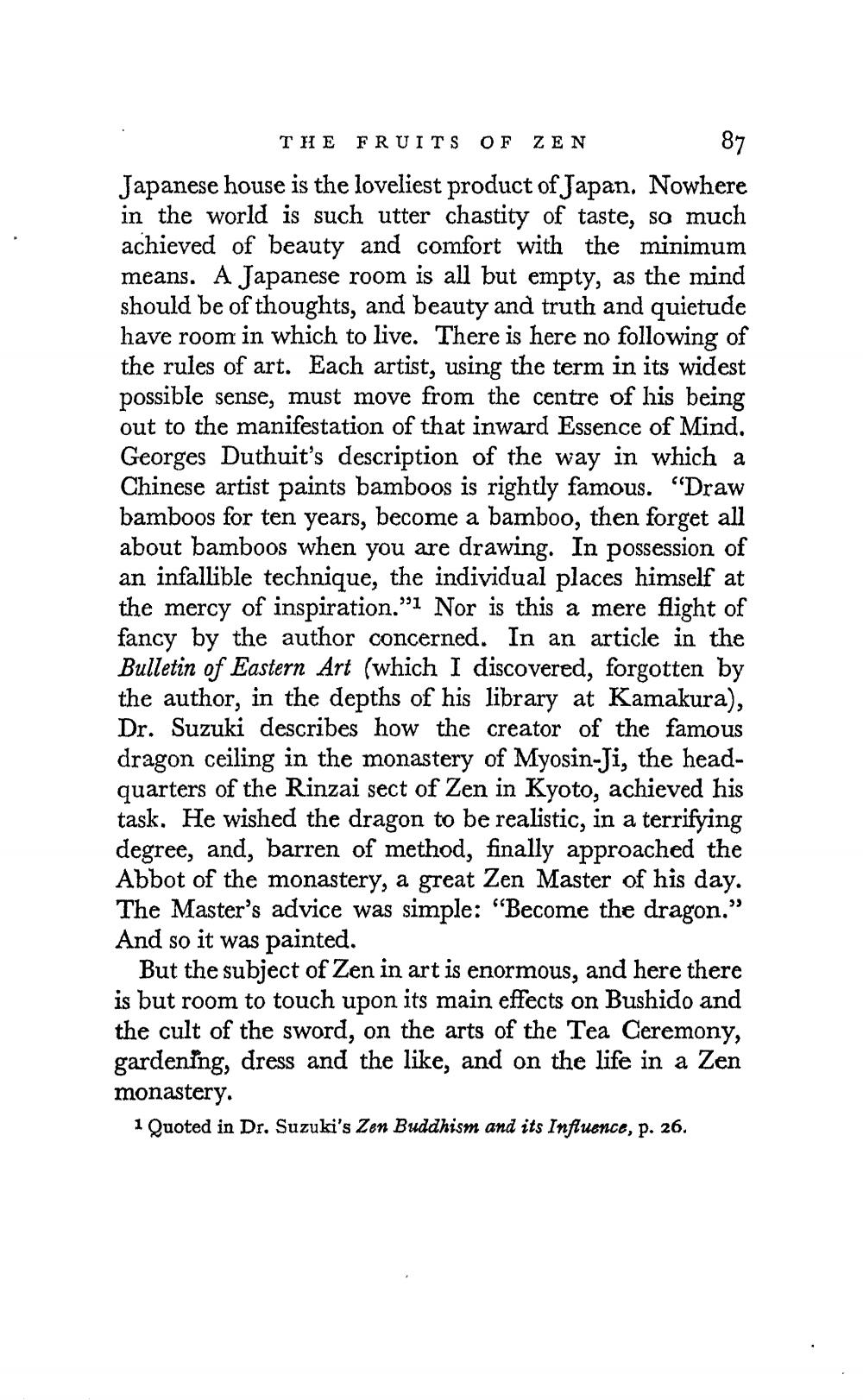________________
THE FRUITS OF ZEN Japanese house is the loveliest product of Japan. Nowhere in the world is such utter chastity of taste, so much achieved of beauty and comfort with the minimum means. A Japanese room is all but empty, as the mind should be of thoughts, and beauty and truth and quietude have room in which to live. There is here no following of the rules of art. Each artist, using the term in its widest possible sense, must move from the centre of his being out to the manifestation of that inward Essence of Mind. Georges Duthuit's description of the way in which a Chinese artist paints bamboos is rightly famous. "Draw bamboos for ten years, become a bamboo, then forget all about bamboos when you are drawing. In possession of an infallible technique, the individual places himself at the mercy of inspiration."1 Nor is this a mere flight of fancy by the author concerned. In an article in the Bulletin of Eastern Art (which I discovered, forgotten by the author, in the depths of his library at Kamakura), Dr. Suzuki describes how the creator of the famous dragon ceiling in the monastery of Myosin-Ji, the headquarters of the Rinzai sect of Zen in Kyoto, achieved his task. He wished the dragon to be realistic, in a terrifying degree, and, barren of method, finally approached the Abbot of the monastery, a great Zen Master of his day. The Master's advice was simple: "Become the dragon." And so it was painted.
But the subject of Zen in art is enormous, and here there is but room to touch upon its main effects on Bushido and the cult of the sword, on the arts of the Tea Ceremony, gardening, dress and the like, and on the life in a Zen monastery.
1 Quoted in Dr. Suzuki's Zen Buddhism and its Influence, p. 26.




